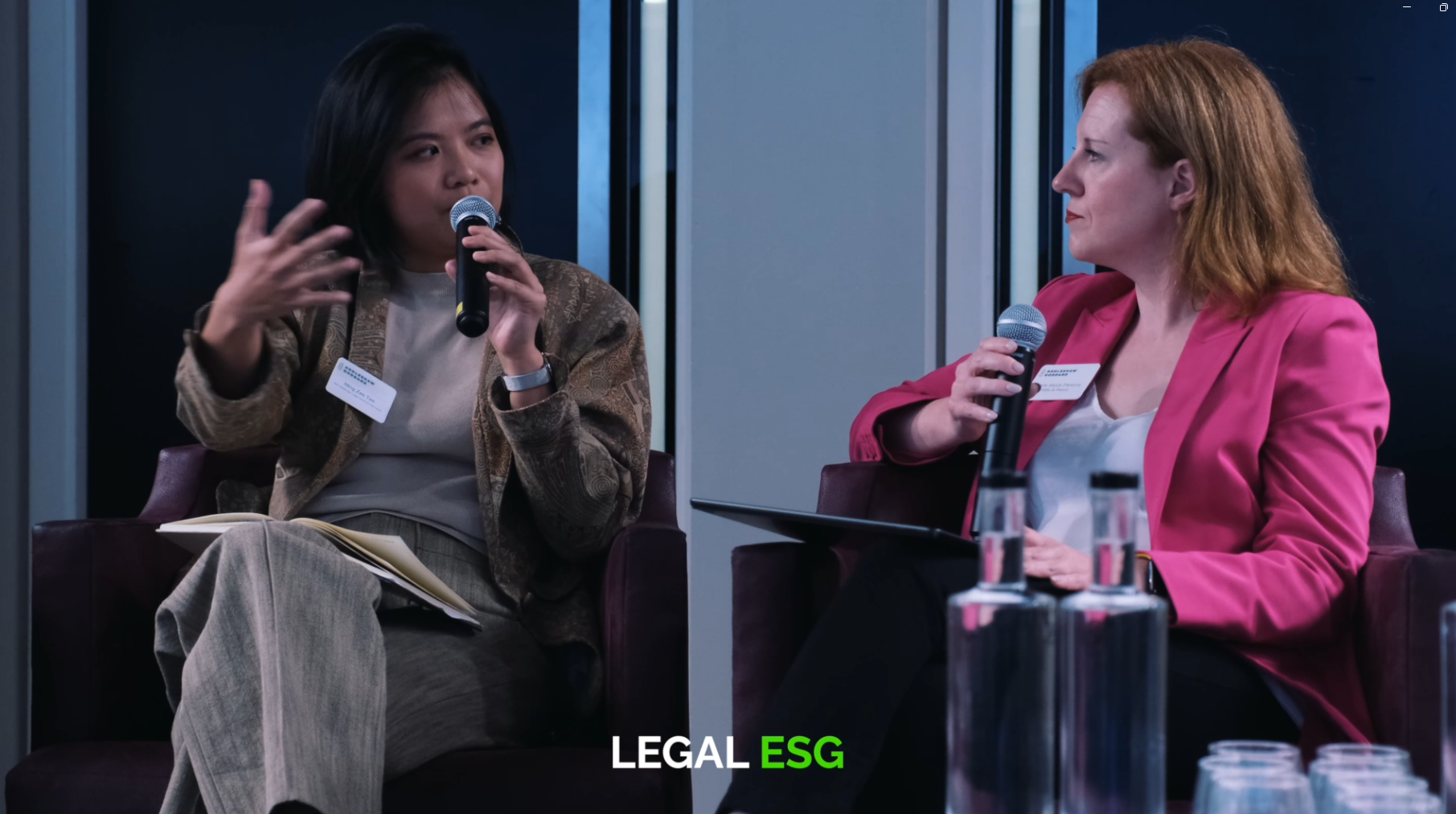November 16, 2025
AUTHOR Daniel Smallwood
There are moments in the evolution of business where two previously distinct domains collide with such force that they reshape the operating landscape for an entire generation of leaders.
The convergence of geopolitics and ESG is one of those moments.

For the better part of two decades, ESG issues were largely treated as adjacent to the core concerns of global commerce. They were discussed through the lenses of corporate responsibility, investor pressure, brand positioning and, increasingly, regulatory expectation.
Geopolitics, by contrast, was the realm of foreign policy, security analysis, and national strategy, relevant to some sectors, yes, but rarely framed as a mainstream business or legal risk.
That separation no longer exists.
Today, geopolitical instability is not an external factor; it is a structuring force within ESG.
Wars reshape supply chains. Sanctions redefine market access. Authoritarian resurgence alters human rights exposure. Energy politics determines climate strategy. Technology controls and cyber conflict transform governance and data security. Political polarisation fuels regulatory fragmentation. Migration, food insecurity, water scarcity, and climate displacement no longer sit on the periphery, they underpin strategic choices.
We have entered an era where geopolitics is ESG, and ESG is geopolitics.
The organisations that understand this, and embed this convergence into their governance, legal strategy, and risk infrastructure, will be resilient in an increasingly unstable world. Those who cling to the old separation will find themselves strategically blind, operationally vulnerable, and legally exposed.
The Age of Geopolitical ESG Risk
To understand this transformation, we must acknowledge a fundamental reality: we are now navigating the most complex geopolitical environment since the end of the Cold War.
But unlike earlier periods of instability, globalisation has made every geopolitical shock travel instantly across borders, through supply chains, capital flows, regulatory systems, and digital networks.
A war in one region becomes a disruption to manufacturing in another, a sanctions escalation elsewhere, and investor concern everywhere. A tariff dispute triggers price volatility, labour unrest, and operational uncertainty simultaneously. A cyberattack executed in one jurisdiction becomes a corporate governance and disclosure issue in multiple markets.
This geopolitical environment is no longer episodic; it is structural. It is characterised by:
- The re-emergence of great-power competition
- Multipolar fragmentation and weakening global institutions
- Sanctions becoming a primary instrument of foreign policy
- Weaponisation of supply chains
- Politicisation of climate and sustainability policy
- Migration pressures reshaping markets and labour
- Hybrid conflict: cyber, AI, information, infrastructure disruption
- Resurgence of industrial policy and national security screening
Each of these forces cuts straight through the heart of ESG, but not as the industry has historically defined it.
ESG’s future is not in scorecards or slogans. It is in understanding and navigating risk, resilience and responsibility in a politically volatile world.
Boards Are Not Prepared for the Convergence
Through the four roundtables of The ESG Reset, one insight came through repeatedly: boards and executive teams are not equipped for the intersection of ESG and geopolitics.
They have governance committees, audit committees, risk committees, sustainability committees, but few boards have built the horizontal oversight needed to understand how geopolitical turbulence affects ESG obligations, legal exposure, investor expectations, or supply-chain accountability.
It is not that boards lack expertise. It is that the convergence is new, rapid, and multidimensional. Traditional ESG frameworks were not designed to handle:
- export-control regimes
- supply-chain sanctions enforcement
- forced-labour presumptions
- wartime energy instability
- regulatory divergence across competing geopolitical blocs
- disinformation risk
- cyber escalation
- rapid market bifurcation
This is no longer a world where ESG can be delegated to a siloed function.
It demands strategic governance, a board-level operating system that ties geopolitical intelligence directly into risk management, legal strategy, and financial planning.
Without that integration, companies will find themselves caught between contradictory obligations, conflicting stakeholder expectations, and unprecedented legal uncertainty.
Supply Chains Are the New Battleground
If geopolitics and ESG meet anywhere most forcefully, it is in the global supply chain.
For decades, companies sought optimisation, efficiency, and cost reduction. Today, those priorities are colliding with forced-labour laws, sanctions and export controls, climate-related disruption, political instability, resource scarcity and infrastructure fragility
The supply chain has become the frontline of legal liability.
A single misstep: a supplier in a sanctioned region, an opaque subcontractor, a human-rights breach can trigger:
- regulatory enforcement
- shareholder litigation
- reputational damage
- operational shutdowns
- loss of governmental or investor trust
Boards that once viewed supply-chain transparency as a sustainability exercise must now view it as a geopolitical necessity.
The Rise of ESGT: Adding Technology to the Equation
One of the most compelling interventions during The ESG Reset came from Andrea Bonime-Blanc, who argued for the evolution from ESG to ESGT - embedding Technology as a fourth pillar.
She is right.
Technology is no longer peripheral. It shapes:
- cyber exposure
- AI governance
- intellectual-property vulnerabilities
- data privacy
- cross-border information controls
- critical infrastructure dependence
AI will accelerate geopolitical volatility
It is a tool of competition, surveillance, misinformation, economic leverage, and military power. Its governance cannot be separated from ESG obligations, nor from geopolitical realities.
The organisations that treat technology as a strategic risk, rather than an operational detail, will be the ones best placed to navigate both ESG and geopolitics over the next decade.
Regulators Are Moving Faster Than Companies
One of the most overlooked dimensions of the geopolitical-ESG convergence is the regulatory discrepancies across markets.
Even given its recent "slow-downs" and recent retreats, the EU's regulatory regime blends ESG, human rights, climate policy, and digital governance into a unified compliance architecture. The U.S., meanwhile, is bifurcating: federal agencies tighten climate and disclosure rules while individual states pursue either pro-ESG or anti-ESG agendas, creating fragmentation that multinationals must navigate with extraordinary precision. In Asia, regional blocs are aligning sustainability with national competitiveness and supply-chain control.
What this means is simple but profound: Regulation is becoming the geopolitical expression of ESG.
Compliance is now a geopolitical exercise. Disclosure is a political act. Corporate behaviour is a matter of national and supranational interest.
Those who underestimate this shift will face litigation exposure, enforcement risk, and reputational volatility far beyond anything seen in the last decade.
Investors Are Reacting, Not Retreating
One of the myths circulating in public discourse is that investors are pulling back from ESG. The reality is more nuanced. Investors are not abandoning ESG - they are abandoning ambiguity.
From our discussions with investor experts during The ESG Reset, several themes are clear:
· Investors want materiality, not slogans.
· They want clarity on what matters, and why.
· They want evidence of value creation and risk mitigation.
· They want disclosure that reflects geopolitical and regulatory reality.
Investors are not anti-ESG. They are anti-noise.
The Strategic Imperative: Building Geopolitical ESG Intelligence
So what should senior leaders, particularly legal leaders, do?
Three imperatives stand out.
- Build a board-level geopolitical risk architecture: This means integrating political-risk intelligence, ESG governance, legal risk, and supply-chain due diligence into a unified oversight model. Not quarterly. Not annually. Continuously.
- Redesign ESG around materiality, not aspiration: The era of covering everything is over. In a geopolitical world, companies must cover what matters most, legally, strategically, and operationally.
- Reframe compliance as competitive advantage: The companies that can navigate divergent regulatory landscapes and shifting geopolitical tensions will be the companies that win investor trust, market access, and operational resilience.
A New Era of Corporate Responsibility, Rooted in Reality
The convergence of geopolitics and ESG is not a temporary phase or a passing inflection point. It is the new operating environment for global business.
This is an era where responsibility is measured not by what organisations say, but by how they govern; not by what they promise, but by how they manage risk; not by how they report, but by how they navigate complexity.
For leaders, especially in the legal, ESG, and governance communities, this is a moment of both challenge and opportunity. It is a call to rethink, retool, and recalibrate.
The ESG Reset made one thing clear: The future belongs to organisations that understand the world as it is, not as it was.
And today, that world is undeniably
geopolitical.





